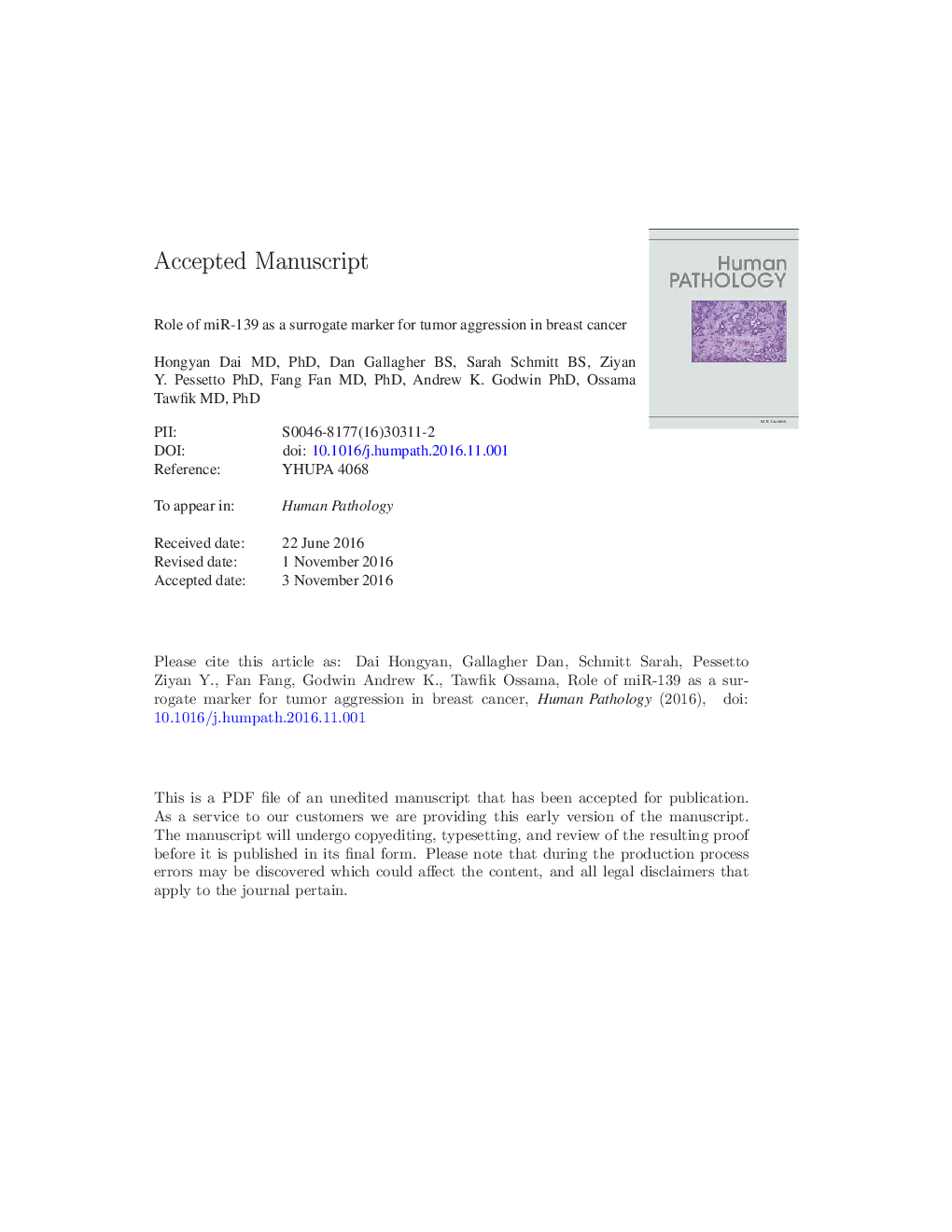| Article ID | Journal | Published Year | Pages | File Type |
|---|---|---|---|---|
| 5716357 | Human Pathology | 2017 | 37 Pages |
Abstract
MicroRNAs are non-protein coding molecules that play a key role in oncogenesis, tumor progression, and metastasis in many types of malignancies including breast cancer. In the current study, we studied the expression of microRNA-139-5p (miR-139) in invasive ductal carcinoma (IDC) of the breast and correlated its expression with tumor grade, molecular subtype, hormonal status, human epidermal growth factor receptor 2 status, proliferation index, tumor size, lymph node status, patient's age, and overall survival in 74 IDC cases. In addition, we compared and correlated miR-139 expression in 18 paired serum and tissue samples from patients with IDC to assess its value as a serum marker. Our data showed that miR-139 was down-regulated in all tumor tissue samples compared with control. More pronounced down-regulation was seen in tumors that were higher grade, estrogen receptor negative, progesterone receptor negative, more proliferative, or larger in size (P < .05). Although not statistically significant, lower miR-139 level was frequently associated with human epidermal growth factor receptor 2 overexpression. In addition, significantly lower miR-139 tissue level was seen in patients who were deceased (P = .027), although older age (>50 years) and positive local nodal disease did not adversely affect miR-139 expression. In contrast, serum miR-139 profile of the patients appeared similar to that of normal control. In conclusion, our study demonstrated that down-regulation of miR-139 was associated with aggressive tumor behavior and disease progression in breast cancer. miR-139 may serve as a risk assessment biomarker in tailoring treatment options.
Related Topics
Health Sciences
Medicine and Dentistry
Pathology and Medical Technology
Authors
Hongyan MD, PhD, Dan BS, Sarah BS, Ziyan Y. PhD, Fang MD, PhD, Andrew K. PhD, Ossama MD, PhD,
